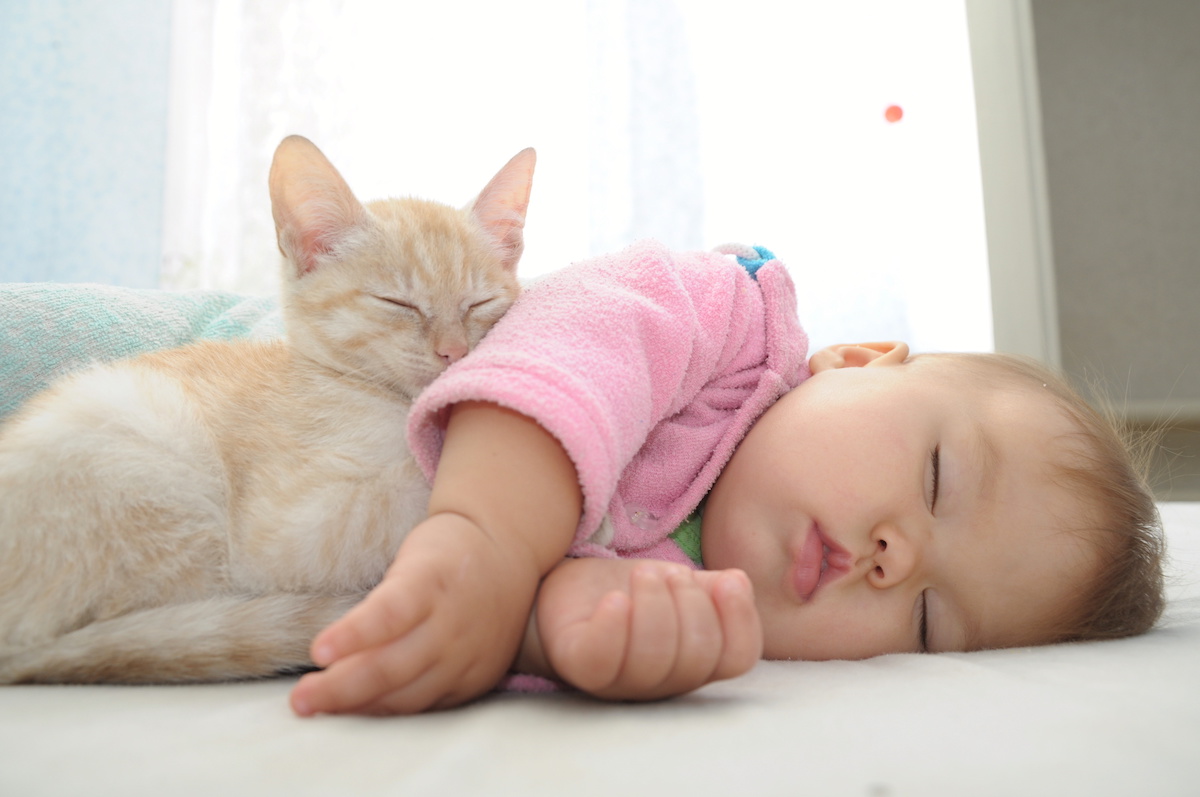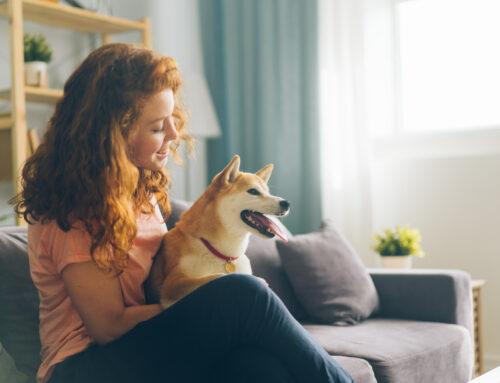Bringing a new baby into your home is an exciting time! However, it can also be a period of adjustment for everyone, including your pets. Cats and dogs are creatures of habit, and introducing a new baby to your pets can disrupt their routines, leading to stress and behavioral changes.
However, with proper prep and a slow and steady introduction, your pets can learn to coexist peacefully with your new baby, forming a loving bond over time.
At the Animal Care Center, we understand the importance of and easy transition time. Here’s a detailed guide to help you introduce your new baby to your pets successfully.
Understanding How Your Pet Thinks
Before diving into the introduction process, it’s essential to understand the world from your pet’s perspective.
Pets, particularly dogs and cats, thrive on routine and familiarity. The arrival of a new baby introduces new smells, sounds, and activities, which can be overwhelming for them. Your pet may react by becoming more:
- Anxious
- Withdrawn
- Jealous
Recognizing these potential reactions will help you approach the situation with empathy and patience.
Preparing Your Pet Before the Baby Arrives
Preparation is key to ensuring a smooth transition for your pet. Here are some steps you can take before the baby arrives:
1. Gradual Changes to Routine
Your pet’s daily routine will inevitably change once the baby arrives. To minimize stress, start adjusting your pet’s routine a few weeks or months before the baby’s arrival.
For instance, if you usually walk your dog at a specific time, gradually change the timing to reflect what it might be like after the baby is born.
Similarly, if your cat is used to sleeping in a particular spot that will soon be occupied by baby furniture, begin encouraging them to sleep elsewhere.
2. Introduce New Baby Items
Babies come with a lot of new stuff—cribs, strollers, toys, and more. Start introducing these items to your pet early on. Let your dog or cat sniff the baby’s crib, stroller, and other items so they become familiar with these new additions. You can also play recordings of baby sounds, like crying or cooing, to help your pet get used to the noise.
3. Reinforce Basic Training Commands
If you have a dog, now is a good time to reinforce basic training commands like “sit,” “stay,” and “leave it.” These commands will be invaluable when you need to manage interactions between your dog and the baby.
If your dog tends to jump on people, work on curbing this behavior to prevent any accidents.
4. Create a Safe Space for Your Pet
Your pet should have a safe, quiet space where they can retreat when they feel overwhelmed. This space could be a specific room, a crate, or a cozy corner with their bed and favorite toys.
Ensure that your pet knows this is their go-to place when they need some time alone.

The First Introduction: Meeting the Baby
When the time comes to introduce your baby to your pet, it’s crucial to do so in a calm and controlled manner. Here’s how to approach the first meeting:
1. Come Home with a Plan
When you return home with the baby, have another adult carry the baby inside while you greet your pet alone. This allows your pet to release any pent-up energy or excitement. Once your pet has calmed down, you can introduce the baby.
2. Keep the Introduction Short and Positive
Hold your baby in your arms and allow your pet to approach at their own pace. Keep the initial introduction short and positive, offering praise and treats to your pet for calm behavior.
If your pet seems overly excited or anxious, then it may be best to try the introduction again later.
3. Supervise All Interactions
Never leave your baby and pet alone together, especially in the early days. Supervision is crucial to ensure the safety of both your baby and your pet.
Over time, as your pet becomes more accustomed to the baby, these interactions can be more relaxed, but vigilance is always essential.
Building a Positive Relationship
After the initial introduction, focus on fostering a positive relationship between your pet and your baby. This process takes time, but with patience and consistency, your pet can learn to accept and even love the newest member of your family.
1. Reward Calm Behavior
Whenever your pet behaves calmly around the baby, reward them with treats, praise, or affection. This positive reinforcement will help your pet associate the baby with good things, reducing any feelings of anxiety or jealousy.
2. Maintain Your Pet’s Routine
While it may be challenging, try to maintain your pet’s routine as much as possible. Regular feeding, exercise, and playtime will help your pet feel secure and less stressed by the changes in the household.
3. Include Your Pet in Family Activities
Include your pet in family activities whenever possible. For example, take your dog along for stroller walks or allow your cat to sit with you while you feed the baby. This inclusion will help your pet feel like they are still an important part of the family.
4. Teach Your Baby to Respect Your Pet
As your baby grows and becomes more mobile, it’s essential to teach them to respect your pet’s space. Teach your child to be gentle when petting and to avoid pulling on the pet’s tail or ears.
This respect will help prevent any negative interactions and build a foundation for a lifelong friendship between your child and your pet.
Addressing Potential Issues
Even with the best preparation, some pets may struggle to adjust to a new baby. Here’s how to address common issues:
1. Signs of Jealousy or Anxiety
If your pet shows signs of jealousy or anxiety, such as excessive barking, whining, or destructive behavior, then it’s important to address these issues promptly.
Increase your pet’s exercise to help burn off excess energy, and spend quality one-on-one time with them to reinforce their sense of security.
2. Resource Guarding
Some pets may start guarding resources like food, toys, or even you, the owner. If you notice this behavior, then consult with a professional trainer or behaviorist to address it before it escalates.
3. Aggressive Behavior
If your pet shows any signs of aggression, such as growling, snapping, or hissing at the baby, then it’s crucial to seek professional help immediately.
Aggression is a serious issue that requires expert intervention to ensure the safety of everyone involved.

When to Seek Professional Help
If you’re concerned about how your pet is adjusting to the new baby, then don’t hesitate to seek professional help. A veterinarian, trainer, or animal behaviorist can offer guidance and support tailored to your specific situation. Early intervention can make a significant difference in how smoothly your pet adjusts to the new family dynamic.
Smoothly Introducing a New Baby to Your Pets is Within Reach
Introducing a new baby to your pets is a process that requires time, patience, and preparation. By understanding your pet’s perspective, preparing them before the baby arrives, and managing the first introduction carefully, you can help your pet adjust to the changes in your household.
With positive reinforcement, consistent routines, and a little extra attention, your pet can learn to coexist peacefully with your new baby, forming a bond that will grow as your child does.
At the Animal Care Center, we’re here to support you through every stage of your pet’s life. If you have any concerns or need additional guidance, then our team of professionals is ready to assist you.
Together, we can ensure that your home remains a happy and harmonious place for both your pets and your new baby!






